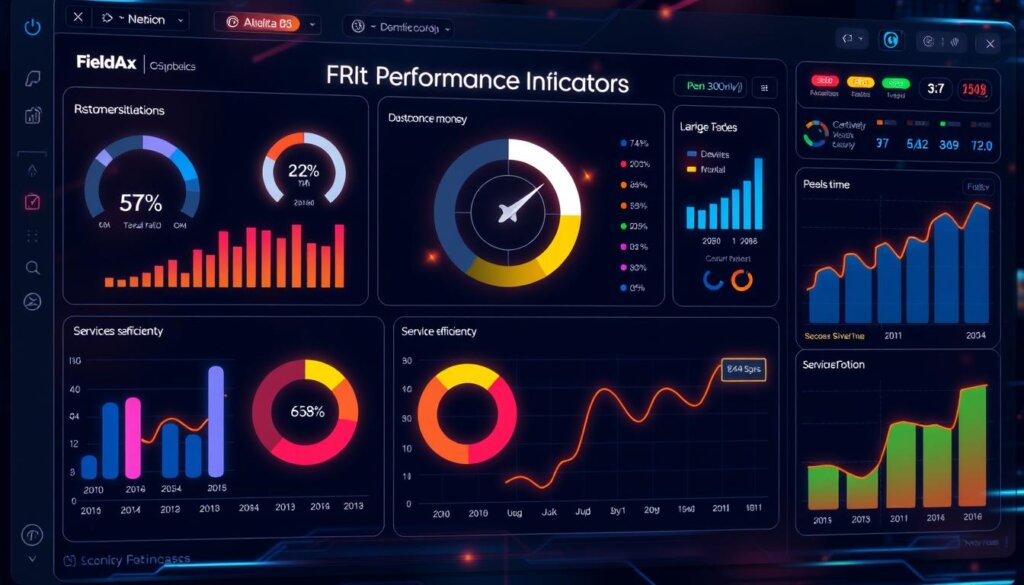Imagine a bustling service company on a chilly Monday morning. The sun rises over the city, but while most are enjoying their coffee at home, one fleet of technicians is already on the move. They use the latest field service analytics tools to see a full dashboard of customer requests and maintenance needs.
They can even predict equipment failures before they happen! This precision not only enhances their service delivery but also keeps them ahead of competitors. For business owners and managers, embracing field service analytics is key to achieving profitability and staying relevant in today’s fast-paced world.
By leveraging data effectively, service teams turn unpredictable scenarios into seamless operations. This ensures customer satisfaction and loyalty while maximizing their bottom line.

Key Takeaways
- Understanding field service analytics is crucial for improving efficiency.
- Data-driven decisions can significantly enhance service delivery.
- Predictive maintenance helps prevent costly downtime.
- Workforce optimization directly contributes to profitability.
- Mobile field service solutions streamline operations effectively.
- Tracking key performance indicators is essential for success.
- Real-life applications show measurable benefits of analytics.
Understanding Field Service Analytics
Field service analytics helps organizations manage their field service operations well. It uses data from customer interactions and technician performance to find valuable insights. By using service management solutions based on field service analytics, businesses can improve their efficiency and service quality.
Data Collection is key as it involves getting information from service reports, customer feedback, and real-time tracking systems. The first step in turning data into useful insights is careful data analysis. Businesses use statistical techniques to understand the data, spotting trends and improving their service plans.
With insights from detailed data analysis, organizations can make better decisions to boost their performance. Tools like FieldAx make it easier for businesses to manage their services proactively. By using field service analytics, companies can meet customer needs faster, improve response times, and offer better service quality.
The Importance of Data-Driven Decision Making
Using data to make decisions leads to better results in service and resource use. It means businesses can trust facts over guesses. This makes operations more efficient and reliable.
Improved accuracy is a big plus. Decisions based on data analysis cut down on mistakes. It also helps predict future needs, so businesses can plan better. This keeps them ahead in the market.
Also, data helps in planning for the long term. Businesses can create services that meet customer needs. Tools like FieldAx make it easier to adopt a data-driven approach. This helps managers make smart, timely choices, boosting profits.
Enhancing Service Delivery through Predictive Maintenance
Predictive maintenance is a game-changer in field service management. It uses advanced analytics to forecast equipment failures. This way, businesses can fix problems before they cause expensive downtime. It makes service delivery better and keeps equipment running smoothly.
Here are some compelling benefits of adopting predictive maintenance:
- Reduced Downtime: Spotting issues early means less service interruptions. This boosts equipment reliability.
- Cost Savings: Companies save money by avoiding the high costs of fixing problems after they happen.
- Increased Customer Satisfaction: Reliable service keeps customers happy. This builds loyalty.
By using analytics platforms like FieldAx, businesses can easily add predictive maintenance to their workflow. This makes service delivery better and increases profits. It helps companies succeed in a competitive world.
Maximizing Profitability with Workforce Optimization
Effective workforce optimization is key to boosting field service profits. By using analytics, companies can improve field service efficiency and cut downtime. Here are some important strategies:
- Right-Sizing Workforce: Analyzing workload data helps managers assign staff well. This prevents overstaffing or understaffing.
- Skill Set Utilization: Matching the right technician to the right task ensures jobs are done well and fast.
- Real-Time Monitoring: Mobile tools help track worker locations and task progress. This boosts accountability and productivity.
With FieldAx, companies use workforce analytics for smarter resource allocation. This leads to big profits and happier customers!
Integrating Mobile Field Service Solutions
Mobile field service solutions have changed how we handle field work. They give technicians tools to make customer service better. The main benefits are:
- Real-Time Data Access: Mobile tools let technicians get to important data right away. This helps them fix problems quickly.
- Enhanced Communication: Better communication between field workers and the office helps everyone work better together.
- Improved Job Management: Mobile apps make tasks like scheduling, dispatching, and reporting easier.
Using mobile tools like FieldAx helps companies improve their service process. This leads to better performance and happier customers.
Field Service Analytics: Key Performance Indicators to Track
Key performance indicators are important analytics metrics for businesses. They help check how well field service operations are doing. By watching these metrics, companies can get better at tracking their performance. This leads to better results overall.
Here are some key KPIs to keep an eye on:
- First-Time Fix Rate: This shows how often service calls are fixed right away. A high rate means happier customers and more efficient work.
- Average Response Time: This metric shows how fast technicians answer service requests. Faster responses mean better use of resources and happier customers.
- Cost per Service Call: This helps manage budgets by looking at what each service call costs. It’s key for making more money.
Tools like FieldAx make it easy to track and analyze these important indicators. This helps companies work better and stay ahead in the market.

Real-Life Applications of Field Service Analytics
Field service analytics are changing how businesses work. They make operations more efficient. Companies using these tools see big improvements. Here are some examples:
- Telecommunications Companies: Many in this field use analytics to manage inventory better. This has cut down their costs a lot.
- Health Care Providers: Hospitals use analytics to improve patient care. They keep medical equipment in top shape and use resources wisely. This makes their services better.
- Utility Companies: These companies use analytics to predict when equipment might fail. Knowing this ahead of time helps them keep services running smoothly. Happy customers are the result.
These stories show how important analytics are in different industries. Using data well can change how services are delivered. FieldAx is a key tool for managing field services today.
Challenges in Implementing Field Service Analytics
Field service analytics offer big benefits, but they come with big challenges. One major issue is getting data from different sources to work together. This can lead to problems like incomplete or wrong data, which hurts decision-making.
Change resistance is another big problem. Employees might not want to use new tools and methods. To solve this, companies need to train well and show the value of analytics.
Scalability is also key. As a business grows, its analytics tools must grow too. It’s important to make sure the system can adapt and expand with the company. By tackling these issues, businesses can make the most of field service analytics, leading to better service and profits.
See how FieldAx can transform your Field Operations.
Try it today! Book Demo
You are one click away from your customized FieldAx Demo!
FAQ
What is field service analytics?
Field service analytics uses data to make service better and more efficient. It involves collecting, analyzing, and predicting data. This helps companies make more money and offer top-notch service.
How does predictive maintenance improve service delivery?
Predictive maintenance uses tools to predict when equipment will fail. This reduces downtime and saves money. It also makes customers happier by being more reliable.
What are some key performance indicators (KPIs) to track in field service operations?
Key KPIs include the First-Time Fix Rate, Average Response Time, and Cost per Service Call. These metrics help check if field service is working well and suggest ways to get better.
How can workforce optimization benefit my field service operations?
Workforce optimization boosts employee productivity and cuts downtime. It looks at workload data to assign tasks well. It also uses mobile tools for real-time monitoring.
What challenges might businesses face when implementing field service analytics?
Businesses might struggle with integrating data, getting employees to change, and scaling up. Overcoming these challenges is key to a successful data-driven culture.
Why is data-driven decision-making important for organizations?
Data-driven decisions make operations more efficient and support planning. They help businesses make choices based on facts, not guesses. This leads to better service and resource use.
How do mobile field service solutions enhance the service process?
Mobile solutions let technicians access data in real-time. They improve communication and make job management smoother. This boosts efficiency and customer happiness.
Can you provide examples of successful applications of field service analytics?
Yes! Telecom companies use analytics for inventory and service planning. Healthcare uses it to improve patient care. Utility companies predict failures to keep services running smoothly.
Author Bio
Co-Founder & CMO at Merfantz Technologies Pvt Ltd | Marketing Manager for FieldAx Field Service Software | Salesforce All-Star Ranger and Community Contributor | Salesforce Content Creation for Knowledge Sharing






